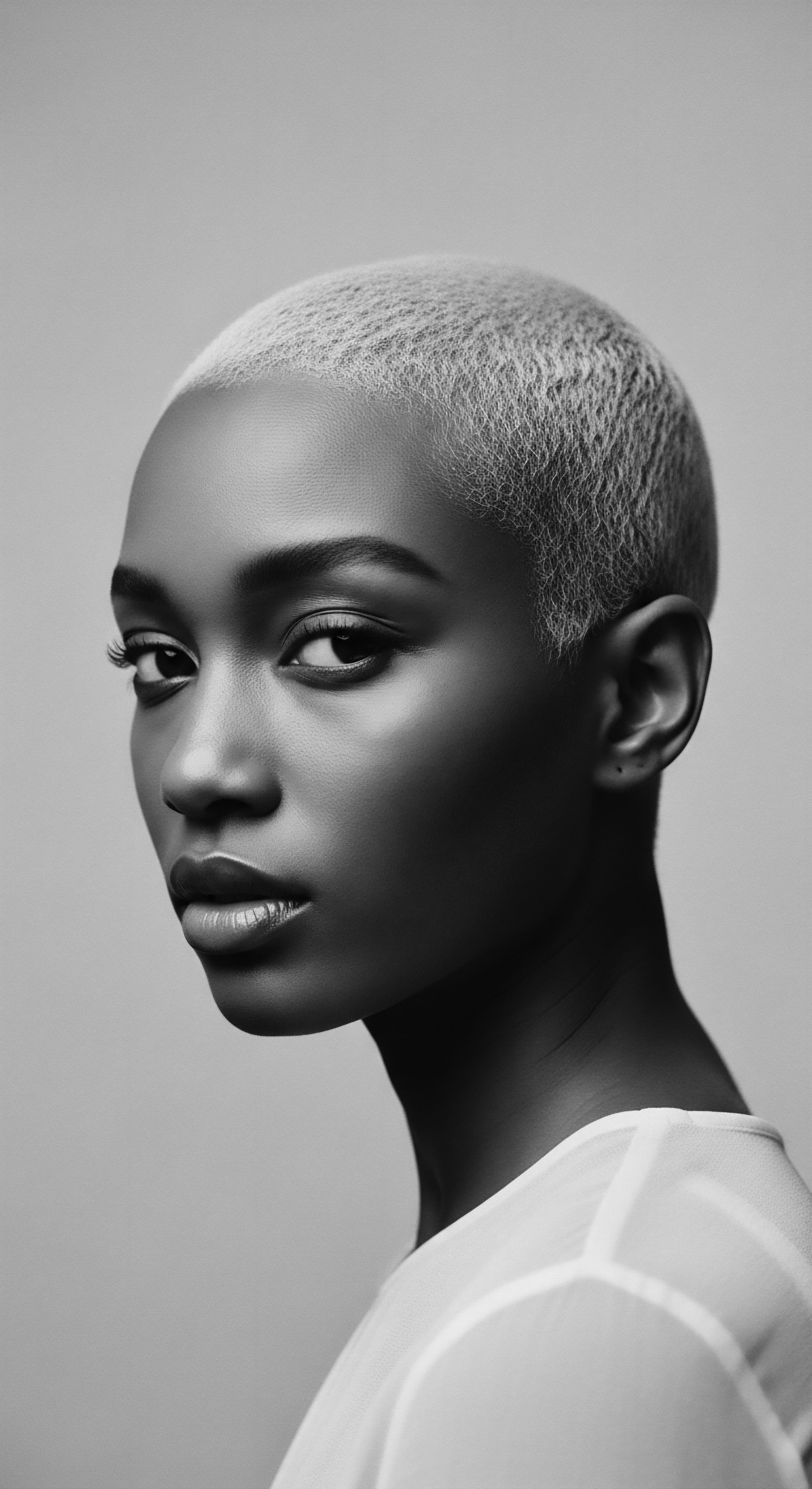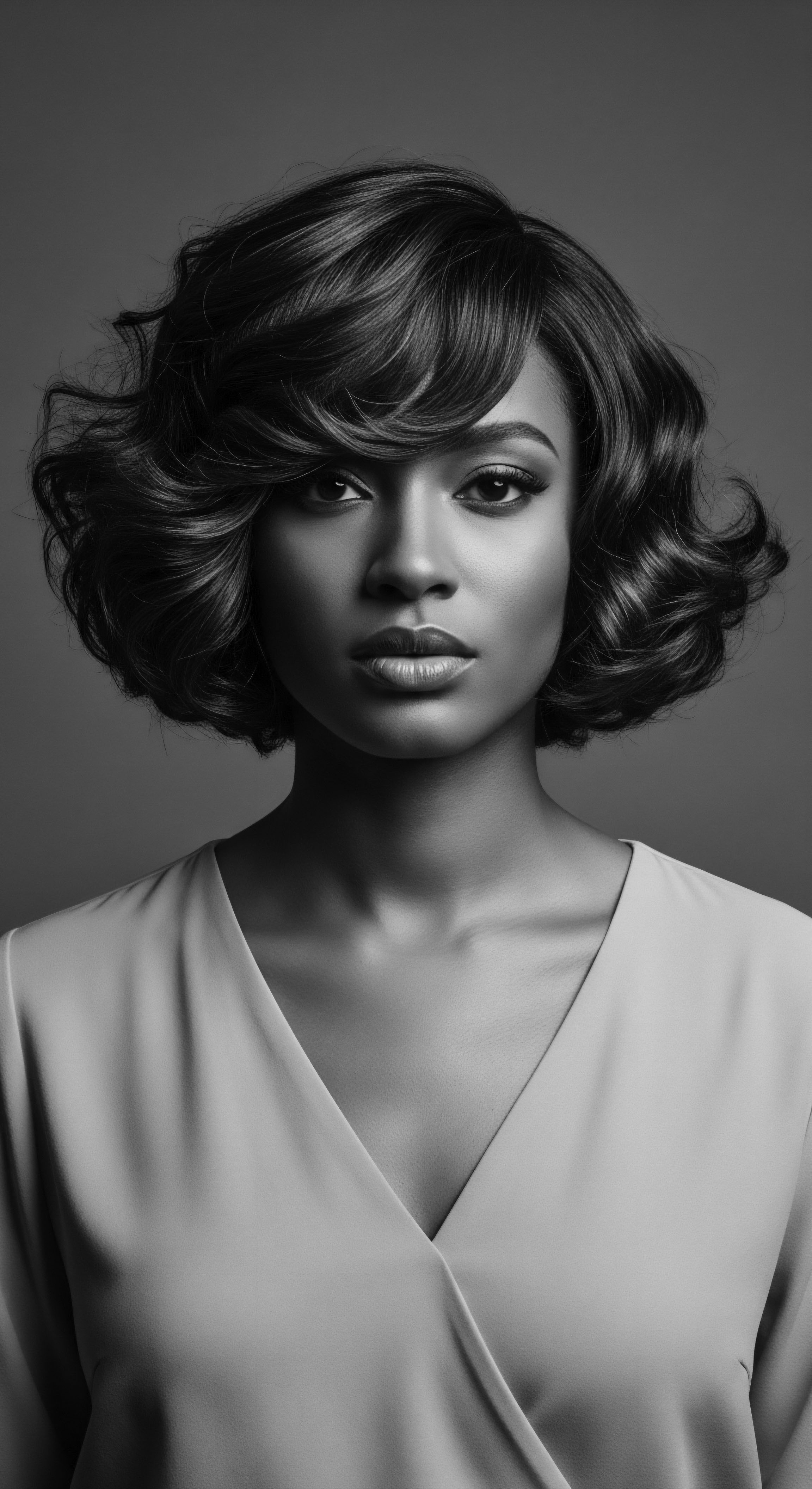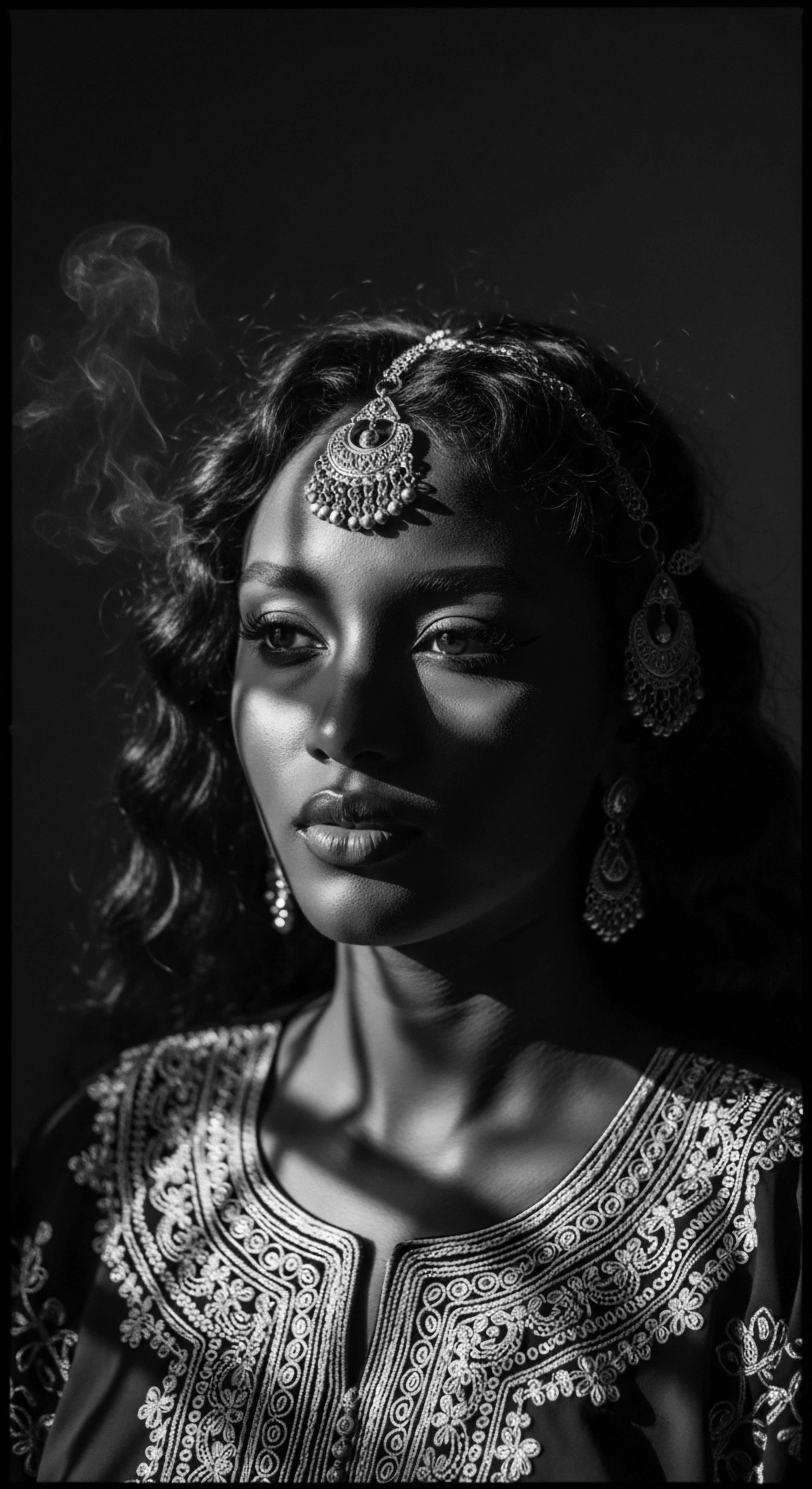
Roots
To truly comprehend the delicate journey of textured hair, one must first listen to the whispers of its lineage, the ancient echoes etched into each coil and curl. Your strands, more than mere biology, carry the weight and wonder of generations, a living archive of resilience and beauty. Yet, within this profound heritage lies a shadowed history ❉ the historical events that, with cruel precision, introduced damage and disconnection to these magnificent tresses. This exploration is an invitation to look beyond the surface, to understand how the very fabric of textured hair, from its elemental structure to the nomenclature describing it, has been shaped, and sometimes scarred, by the currents of time.

Unraveling Hair’s Ancient Blueprint
The journey commences with an appreciation for the inherent strength and unique architecture of textured hair. Its spiraling helix, a marvel of biological engineering, possesses distinct characteristics setting it apart. Each strand emerges from a follicle that is often elliptical in cross-section, causing the hair shaft to twist and coil as it grows. This morphology leads to numerous points of curvature along the strand, creating the signature density and volume.
While this structure contributes to its splendor, it also dictates specific needs, making it more susceptible to damage when external forces clash with its natural design. Understanding this foundational biology grounds our perception, moving beyond superficial aesthetics to a reverence for its complex self. Ancient African civilizations, with their intimate knowledge of nature’s rhythms, understood these inherent qualities, crafting practices that worked in harmony with the hair’s very being, recognizing its deep connection to personal identity and communal status. Hair was not separate from self; it was an extension, a visible manifestation of one’s spirit and place in the world.

Ancestral Wisdom and the Language of Hair
Long before modern scientific terms, ancestral communities possessed a profound lexicon for describing and caring for textured hair. This language, often interwoven with spiritual and social meaning, reflected a deep, intuitive understanding of its properties and care. When we examine historical events, we see how this rich vocabulary, along with the practices it described, faced profound disruption. The forced displacement of African peoples during the transatlantic slave trade represents a catastrophic event that severed direct access to indigenous knowledge systems, traditional tools, and natural ingredients.
Enslaved Africans, stripped of their identity, were also denied the means to care for their hair in ways that honored its inherent needs. This deliberate act of dehumanization had direct consequences for hair health, leading to widespread damage as makeshift, often harmful, solutions or complete neglect became the grim reality.
The transatlantic slave trade profoundly disrupted ancestral hair care practices, leading to widespread damage through forced neglect and the use of inadequate substitutes.
Consider the stark contrast between traditional African hair care, often involving natural butters, herbs, and carefully crafted combs, and the dire circumstances faced during enslavement. Without these essentials, hair health suffered immensely, resulting in issues like breakage, hair loss, and stunted growth. This historical trauma established a long-lasting legacy where the ability to properly care for one’s textured hair became a struggle, impacting generations. The very concept of “good hair” versus “bad hair” also took root during this period, privileging straighter textures and devaluing natural coils, further influencing care practices towards those that caused damage in pursuit of conformity.

The Legacy of Classification and Bias
Modern textured hair classification systems, while attempting to categorize hair types, sometimes carry echoes of historical biases. The need to categorize, in some instances, grew from a desire to understand, but also from a historical tendency to codify and control. In contrast, ancestral communities often understood hair not through rigid classifications but through a holistic lens, where its health and appearance reflected inner well-being and spiritual alignment.
The historical pressure to conform to Eurocentric beauty standards often encouraged the use of harsh methods to alter natural curl patterns, leading to physical damage and a psychological disconnection from one’s inherited hair. This societal conditioning, rooted in discriminatory ideals, actively influenced what was considered “acceptable” hair, often at the expense of its vitality.
- Shea Butter ❉ A traditional African emollient, revered for its moisturizing properties, often absent during periods of forced displacement.
- Kombs ❉ Intricately carved tools, often with spiritual significance, replaced by rudimentary or damaging implements.
- Herbal Infusions ❉ Ancient botanical remedies used for cleansing, strengthening, and healing, largely lost to successive generations.

Ritual
The rhythm of care, the deliberate movements of styling, and the transformative power of adornment are not merely cosmetic; they are ancient rituals, deeply woven into the fabric of textured hair heritage. Yet, within these very acts, historical events have introduced patterns of damage, often in the pursuit of standards that denied the hair’s authentic being. To understand this, we must examine how styling techniques, the tools employed, and the very concept of hair transformation have been shaped by the tides of history, revealing where heritage was preserved, distorted, or lost.

Styling Under Pressure ❉ Eras of Conformance
For centuries, styling textured hair was an art form, a means of communication, and a marker of identity across African communities. Elaborate cornrows, intricate threading, and skilled braiding were not just aesthetic choices; they were narratives, conveying status, age, marital standing, and even tribal affiliation. The tools used—natural fibers, wooden combs, and plant-based adornments—worked in concert with the hair’s inherent structure. However, the shadow of historical events cast a long pall over these traditions.
During slavery, the ability to maintain these complex styles was often denied. Hair was shorn as an act of dehumanization, a deliberate erasure of cultural connection. Post-emancipation, the struggle for acceptance within a dominant Eurocentric society introduced new forms of “styling” that often inflicted damage.

The Hot Comb’s Scorching Path
The advent and widespread adoption of the hot comb in the late 19th and early 20th centuries marked a significant shift. While it offered a temporary means of straightening, it also introduced a new form of thermal damage. The hot comb, often used with pressing oils, represented an attempt to achieve smoother, straighter hair, a look increasingly associated with respectability in a society where natural textured hair was deemed unprofessional or undesirable.
The repeated application of high heat, especially without proper protective agents, led to dry, brittle strands, breakage, and scalp burns. This was a direct result of societal pressure, where economic and social mobility were often implicitly or explicitly linked to hair conformity.
| Historical Styling Practice Pre-Colonial African Braiding |
| Influence on Hair Health and Heritage Highly protective, promoting growth and scalp health; deeply tied to identity and social communication. These practices are cornerstones of textured hair heritage. |
| Historical Styling Practice Forced Hair Shaving (Slavery) |
| Influence on Hair Health and Heritage Extreme psychological and physical trauma; direct physical damage upon regrowth due to lack of traditional care. A deliberate act of cultural erasure. |
| Historical Styling Practice Early Hot Comb Use |
| Influence on Hair Health and Heritage Introduced thermal damage (burns, breakage, dryness) in pursuit of Eurocentric standards. A compromise between societal pressure and hair preservation. |
| Historical Styling Practice The evolution of textured hair styling frequently reflects a complex interplay between ancestral traditions, forced adaptations, and societal pressures, often influencing the health of the hair. |

Chemical Alterations ❉ A Costly Pursuit
The mid-20th century witnessed the rise of chemical relaxers, a product promising permanent straightness. These formulations, particularly the early lye-based versions containing sodium hydroxide, were highly alkaline and designed to break down the hair’s disulfide bonds permanently. While offering a desired aesthetic, their use came with significant risks. Scalp burns, hair breakage, and even chemical alopecia became common consequences, often due to the caustic nature of the chemicals and sometimes the improper application or prolonged exposure.
The widespread adoption of relaxers, despite these known dangers, underscores the intense societal pressure faced by Black women to align with a narrow, Eurocentric ideal of beauty. This pursuit, fueled by deep-seated discriminatory beliefs about textured hair, directly contributed to widespread damage across generations.
The pervasive use of early chemical relaxers, driven by societal pressure, frequently resulted in scalp burns and hair breakage, marking a significant source of historical damage.
A study by Sishi et al. (2019) found that the median pH of all relaxers tested, including those marketed for children, was 12.36 (interquartile range 12.10 – 12.62), levels deemed corrosive to the skin. The study further highlighted that a significant proportion of sodium hydroxide relaxers, 91% for adults and 67% for children, were sold without a neutralizing shampoo. This lack of a critical post-treatment step directly exacerbated scalp burns and hair damage, revealing a systemic issue in product formulation and guidance that historically contributed to widespread harm.

The Politics of Presentation
The historical influence on textured hair damage is not merely chemical or physical; it is deeply political. Laws enacted in the 1800s prohibited Black women from wearing their natural, tightly coiled hair in public settings, creating an explicit demand for altered styles. This legal and social coercion reinforced the notion that natural hair was “ugly” and “unacceptable”, pushing individuals towards damaging straightening methods.
The very act of caring for one’s natural hair, or altering it, became a statement, a negotiation of identity within oppressive structures. The tools and techniques of straightening became symbolic, representing a forced assimilation at the expense of hair health and cultural authenticity.
- Hot Combs ❉ Heated metal tools, often causing thermal degradation and scalp irritation.
- Lye Relaxers ❉ Highly alkaline chemical compounds designed for permanent hair straightening, notorious for caustic burns.
- “No-Lye” Relaxers ❉ While less caustic than lye, these still contain strong alkalis and can cause significant damage, marketed as a “safer” alternative without substantial evidence to support less scalp lesions and burns.

Relay
The journey of textured hair care, from ancient practices to modern understanding, is a continuous relay, a passing of ancestral wisdom and hard-won lessons across generations. It is here, in the pursuit of holistic well-being and problem-solving, that we must confront how historical events have shaped not only the types of damage observed but also the very remedies sought. Our understanding of care regimens, nighttime rituals, and the power of ingredients is irrevocably linked to the deep currents of textured hair heritage, revealing both historical wounds and enduring pathways to healing.

Holistic Care in the Shadow of History
Ancestral wellness philosophies often viewed hair as an integral part of the body, connected to spirit and community. Care rituals were holistic, incorporating natural ingredients, mindful practices, and communal bonding. This comprehensive approach to well-being meant that hair health was intertwined with overall vitality. However, the forced realities of slavery and subsequent discriminatory periods systematically dismantled these holistic systems.
The trauma of forced labor, inadequate nutrition, and constant stress undoubtedly manifested in physical hair damage, from brittleness to hair loss, a direct consequence of a disrupted lifestyle and lack of resources. The very definition of “care” shifted from nurturing ancestral traditions to a desperate struggle for survival, where hair health often became a secondary concern.

How Did Colonialism Affect Indigenous Hair Care Practices?
Colonialism’s long reach extended to every facet of life, including hair care. The imposition of Eurocentric beauty ideals inherently devalued indigenous hair types and the intricate care practices associated with them. This cultural subjugation not only led to psychological distress but also created an environment where traditional knowledge about ingredients and methods faded or was actively suppressed.
The absence of specific traditional tools and the unavailability of native ingredients forced a reliance on whatever was accessible, often leading to damaging improvisation. For example, during enslavement, without access to traditional African hair essentials, enslaved individuals sometimes used substances like kerosene or bacon grease, which provided minimal benefit and could cause adverse effects.

The Evolution of Nighttime Care
Nighttime rituals for textured hair have always served a protective purpose, safeguarding strands from friction and tangles during sleep. In traditional African societies, coverings and specific braiding patterns would have been employed to preserve intricate styles and maintain moisture. The modern bonnet, a ubiquitous tool in textured hair care today, has historical roots in these protective practices, though its widespread necessity intensified as hair became more prone to dryness and breakage due to harsh styling methods. The need for intensive nighttime care became more pronounced as exposure to damaging chemical treatments and heat styling grew, creating a need to mitigate harm inflicted during the day.
Nighttime hair care rituals, including the use of protective coverings, represent an enduring legacy of ancestral wisdom adapted to mitigate the challenges introduced by historical hair damage.
The historical events that influenced hair damage necessitated a shift in the perceived “problems” textured hair faced. Prior to these influences, issues might have been related to general environmental factors or natural wear. Post-slavery and with the rise of chemical alterations, the prevailing problems became breakage, thinning, and chemical burns.
The quest for remedies thus evolved, often focusing on repair and recovery rather than solely maintenance. This shift highlights how historical damage reshaped the very landscape of textured hair “problems” and their proposed solutions.

Addressing Damage ❉ A Historical Compendium
The compendium of textured hair problems, and the solutions sought, mirrors the historical trajectory of damage. Traction alopecia, a condition characterized by hair loss due to prolonged pulling or tension, for instance, saw increased prevalence with styling practices that pulled hair taut, often to achieve a “neat” or “tamed” look in discriminatory environments. Chemical burns and hair shaft weakening became prevalent with the popularization of relaxers, necessitating a new generation of neutralizing and strengthening treatments. Understanding these problems requires acknowledging their historical context, recognizing that some forms of damage are legacies of events driven by systemic pressures rather than inherent hair fragility.
The challenges associated with textured hair damage prompted the development of specialized ingredients and treatments. Traditional ingredients, such as certain plant oils and butters, provided deep nourishment. Yet, the commercial beauty industry, often driven by profit and Eurocentric ideals, sometimes introduced ingredients that further compromised hair health or offered superficial solutions.
This dynamic created a historical tension ❉ the ancestral wisdom advocating for gentle, natural care versus a burgeoning industry pushing for dramatic, often damaging, alterations. The consequences of this historical tension are still felt today, influencing the choices individuals make about their hair and the products they select.

Reflection
The story of textured hair is a saga of enduring spirit, a continuum stretching from the wisdom of ancient matriarchs to the triumphs of modern self-acceptance. In tracing the historical events that have influenced its damage, we do more than simply catalog misfortunes; we illuminate the profound resilience woven into each strand. The legacy of forced assimilation, the insidious pressure of Eurocentric beauty ideals, and the very real physical and emotional toll of caustic chemicals all stand as stark reminders of systemic oppressions. Yet, within this narrative of challenge, a profound truth arises ❉ the inherent strength of textured hair, and the unwavering resolve of its stewards, could not be truly broken.
The journey has always been one of reclamation, a tender, deliberate act of honoring ancestral practices and rediscovering the boundless beauty within. From the deep spiritual significance hair held in pre-colonial societies to the present-day natural hair movement, a powerful re-alignment with heritage persists. This living library of knowledge, a testament to the “Soul of a Strand,” serves as a guiding light, reminding us that understanding the past is the first step towards a future where every curl, coil, and wave can simply exist in its inherent splendor, free from the burdens of historical harm, celebrated in its boundless glory.

References
- Byrd, Ayana D. and Lori L. Tharps. Hair Story ❉ Untangling the Roots of Black Hair in America. St. Martin’s Press, 2014.
- Johnson, A. P. Hair and Scalp Diseases in the Negro. Journal of the National Medical Association, 1937.
- Lashley, Michael. The Importance of Hair in the Identity of Black People. Nouvelles Pratiques Sociales, 2021.
- Sishi, Busisiwe C. et al. The pH of Lye and No-Lye Hair Relaxers, Including Those Advertised for Children, Is at Levels That Are Corrosive to the Skin. Clinical, Cosmetic and Investigational Dermatology, 2019.
- Walker, A. P. The History of Black Hair ❉ Unveiling the Cultural and Political Significance of Hairstyles in the African Diaspora. Harvard University Press, 2020.
- White, Shane, and Graham White. The Sounds of Slavery ❉ Discovering African American History Through Songs, Sermons, and Speech. Beacon Press, 2005.
